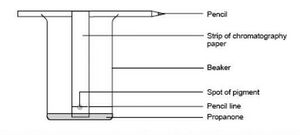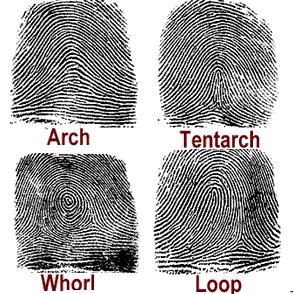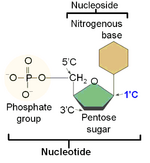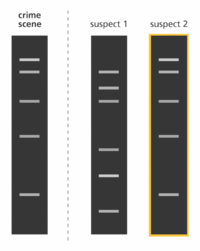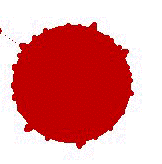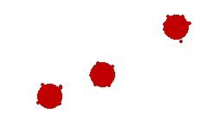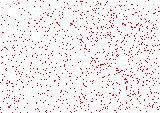Crime Busters
| Crime Busters | ||||||||||||||||
|---|---|---|---|---|---|---|---|---|---|---|---|---|---|---|---|---|
| Type | Chemistry | |||||||||||||||
| Category | Lab | |||||||||||||||
| Description | Given a scenario, a collection of evidence, and possible suspects, students will perform a series of tests that along with other evidence will be used to solve a crime. | |||||||||||||||
| Event Information | ||||||||||||||||
| Latest Appearance | 2023 | |||||||||||||||
| Forum Threads | ||||||||||||||||
| ||||||||||||||||
| Question Marathon Threads | ||||||||||||||||
| ||||||||||||||||
| Official Resources | ||||||||||||||||
| Website | www | |||||||||||||||
| Division B Results | ||||||||||||||||
| ||||||||||||||||
Crime Busters (also known as Science Crime Busters prior to 2011) is a permanent Division B chemistry event where participants will use concepts in chemistry to solve a fictional crime scene. Participants will be given a scenario and possible suspects, as well as physical evidence from the categories outlined in the rules manual. They will be able to perform tests on the evidence and use the results to solve the crime. Participants may bring two 8.5x11" pages containing information on both sides in any form from any source, as well as a kit of lab equipment to perform tests during the event.
This event is closely associated with the Division C event Forensics. The information on that page may be useful for a competitor who has already learned the basics of Crime Busters and is looking for more in-depth explanations of some concepts.
Supplies
To participate in Crime Busters, every team of students should come prepared with the proper safety equipment. This includes:
- Category C eye protection
- An apron or lab coat
- Close-toed shoes
- Clothes that cover the skin down to the wrists and ankles (no tight-fitting pants)
Students with shoulder-length or longer hair should also tie it back. Gloves are not required by the rules manual, but may be required by the event host. Always check the website for your specific tournament to see if they have any safety requirements not covered by the rules manual. Students not following the proper safety requirements or behaving unsafely during the event may be penalized or disqualified.
Practicing at School
To practice for the event at school, students should check with a coach to ensure that they have access to all of the potential pieces of evidence that may be tested. This includes:
- Powders: white sand, calcium carbonate, table salt, sugar, flour, cornstarch, calcium sulfate dihydrate (gypsum), baking soda, powdered gelatin, Alka-Seltzer, anhydrous sodium acetate, vitamin C, yeast
- Metals: aluminum, copper, iron, tin, zinc, magnesium
- Liquids: lemon juice, rubbing alcohol (isopropyl alcohol), household ammonia (3%), water, vinegar, hydrogen peroxide (3%)
- Hairs: human, dog, cat
- Fibers: synthetic, vegetable, animal
- Plastics: PETE, HDPE, non-expanded PS, LDPE, PP, PVC, PMMA
Powders and liquids are often the easiest to find, since many of them are common household substances. When sourcing fibers and plastics, competitors should check any tags or labels on the items to ensure that they are the correct substance. Powders can be stored in old pill bottles, test tubes with lids, or even simple plastic bags. Be sure to label them properly so as to not confuse the powders. Coaches should also source iodine (KI solution), 1M hydrochloric acid, and a wash bottle with no more than 250 mL of water. For more information on the materials required to perform chromatography, see the chromatography section of this article.
At the Competition
Competitors are responsible for providing their own lab equipment to perform the event. The full list of allowed materials for all Division B chemistry events is available on soinc.org, but a list is also provided below. Any students that do not provide their own equipment will not be provided equipment, so it is best to bring as much as is allowed. However, students bringing non-permitted equipment than is allowed may be penalized up to 10% by the event supervisor.
- 50 mL beakers
- 400 mL beakers
- Test tubes
- Test tube rack
- Test tube brush
- Test tube holder (for heating test tubes)
- Petri dishes
- Spot plate
- Microscope slides
- Cover slips
- Droppers/pipettes
- A spatula/spoon/scoopula
- Stirring rods
- Metal forceps/tweezers
- pH or litmus paper
- Hand lens
- Paper towels
- Pencil
- Ruler
- Magnets
Qualitative Analysis
When practicing identifying unknowns, develop a strategy. Many partnerships split up the unknowns so that each partner only focuses on some of them--for instance, Competitor 1 may focus on powders, hairs, and metals while Competitor 2 may focus on liquids, fibers, and plastics. The charts in this section provide a good starting point, but the best way to learn to identify unknowns is through practice and experience. Create charts for the testing results similar to the ones found in this section. Include properties like appearance, solubility, pH, and reactions with reagents like hydrochloric acid and iodine. Descriptions of these results are often subjective, and competitors should be able to identify substances in a way that makes sense to them.
Powders
| Powder | Crystal Shape | Color | Solubility | pH | HCl | Iodine | Formula | Notes | Other Names |
|---|---|---|---|---|---|---|---|---|---|
| Sodium Acetate | powder - irregular shape | white | yes | ~8 | none | none | NaC2H3O2 | exothermic when mixed with water and has a distinctive sweet odor | |
| Sand | random | white | no | ~6 | none | none; bad odor | SiO2 | does nothing, may have black specks | |
| Calcium Carbonate | powder | white | no | ~7-8 | fizz | none; the color looks sort of like mustard/peanut butter | CaCO3 | the powder it self is very airy and hole-y | Limestone, chalk, aragonite |
| Vitamin C | grains | white | yes | ~2 | none | clears it | C6H8O6 | may have a colored tint- green, yellow, pink, orange (if from tablets). Distinctive smell. | Ascorbic Acid |
| Salt | signature square grains | white | yes | ~6-7 | none | none | NaCl | delayed reaction with iodine (may be difficult to observe) | Table salt |
| Sugar | grains | white | yes | ~6-7 | none | none | C12H22O11 | Similar to salt but grains are slightly rounded | Sucrose |
| Flour | powder | Off-white | no; lumpy | ~6-7 | none | blackens it - iodine clumps together, unlike cornstarch | (C6H10O5)n | Clumps with water | |
| Cornstarch | powder | white | no - forms solid-liquid substance | ~6-7 | none | blackens it | C27H48O20 | pure white, feels slippery | |
| Gelatin | grains | light yellow | no; turns into gel over time | ~6 | none | none | C102H151O39N31 | swells in water | |
| Alka-Seltzer | powder | white | yes | ~6-7 | fizz | fizz | C16H17NaO14 | fizzes with everything including water | |
| Yeast | pellets | tan | no | ~7 | none | none | microorganism | generally easy to identify since it smells sort of like bread most of the time | Saccharomyces Cerevisiae |
| Baking Soda | powder | white | yes | ~8 | extremely fizzy for a long while | none; more red-brown than Plaster of Paris | NaHCO3 | rough texture (kinda) | Sodium bicarbonate, sodium hydrogen carbonate |
| Gypsum | powder | white | no | ~6 | none | none | CaSO4· 2H2O | opaque bubbles and hardens in water | Plaster of Paris, calcium sulfate dihydrate, alabaster |
Many powders have a "give-away" making them easier to identify:
- Alka-Seltzer fizzes with everything you mix it with
- Yeast smells like bread and is the only tan powder
- Gelatin swells in water and is the only one to do that
- Ascorbic acid (Vitamin C) is the only acidic powder, and the only one that clears in Iodine
- Salt has the only square grains
Keep in mind, pH is the negative log of H+ concentration, which means the more sample you add for the same amount of water, the further your pH will be from neutral (7). It is recommended that you make your own chart of test results and then check that against information found online, but this is especially important for pH.
Pay attention to what the powder looks like. If you practice a lot and learn to identify certain powders on sight, you don't need to run any tests on it and it will save a lot of time.
Mixtures
In Crime Busters, there are 3 nonmetals which can never be mixed in the event: yeast, vitamin C, and sodium acetate. Everything left is neutral or basic and non-biological.
The key to finding the components to a mixture is to react each off individually. If there appears to be a powder and a crystalline component, add HCl or iodine to a sample. If the iodine turns blue, finding the first component will be straightforward because you will only need to find the pH of the mixture with water. A more neutral pH will mean that the noncrystalline component is flour; a more basic pH will mean cornstarch. If the iodine fizzes (and the HCl), then the component is Alka-Seltzer. A fizz with only the HCl means the component is either CaCO3 or NaHCO3. Once again, a pH test will show the difference: a neutral pH means calcium carbonate, and a basic pH means baking soda. No reaction means gypsum. To find the crystal, test for solubility. Sand will not dissolve, whereas salt and sugar will. The difference between the latter two is that salt has cubic crystals, and sugar has irregular crystals.
Two crystals are fairly easy to separate because the HCl and iodine can be skipped, and only solubility needs to be tested. Once again, a component that does not dissolve is sand, and a component that does is either salt or sugar, which can be differentiated by crystal shape. If both dissolve, the mixture is salt and sugar (probably the single most common mixture in this event).
For two powders, test with iodine first, then HCl if not all of the mixture fizzed or turned blue, and finally pH if needed. Go off of the information above to find each, and use logic if two things react at once.
Liquids
| Liquid | Color | pH | Scent | Iodine | Formula | Notes | Scientific Name |
|---|---|---|---|---|---|---|---|
| Lemon Juice | Cloudy, yellowish | ~2-3 | citrus | none | C6H8O7 | expect pulp | Citric Acid |
| Rubbing Alcohol | clear | ~6 | sweet, similar to alcohol | none | C3H8O | slightly sweet smelling | Isopropanol, Isopropyl Alcohol |
| Ammonia | Cloudy, especially after shaking | ~10-11 | pungent | none | NH3 | expect it to be some random color and scent | Azane |
| Vinegar | clear | ~2-3 | sour | none | CH3COOH | very strong scent | Acetic Acid |
| Water | clear | ~7 | none | none | H2O | nothing special about it | Dihydrogen Monoxide |
| Hydrogen Peroxide | clear | ~6 | none | tiny delayed bubbles | H2O2 | delayed reaction in iodine, bubbles of oxygen appear when shaken |
Each liquid has a "give-away", making them fairly easy to identify-
- Lemon Juice has a strong lemon odor (and is a weak acid, like vinegar)
- Ammonia is the only base. Despite its high pH value, it is a weak base because it dissociates in low concentrations.
- It is best to use pH paper first, before smelling the unknown liquid, so that you will never have to smell ammonia (even if by wafting) since it can be chosen conclusively if the unknown liquid has a very basic pH.
- Vinegar has a distinctive vinegar odor (and is a weak acid, like lemon juice)
- Rubbing Alcohol is neutral, but has a distinctive odor
- Hydrogen Peroxide and water are very similar (both are odorless, neutral liquids), but there is a simple way to tell them apart. Fill a small well in your testing tray with the liquid, put in a few drops of iodine and stir. After about a minute (though sometimes more), tons of bubbles will appear if it is hydrogen peroxide, while nothing will happen in water (besides the color change due to iodine's color).
Metals
| Metal | Color | Density | Water | HCl | Magnetic | Formula | Atomic Number | Notes |
|---|---|---|---|---|---|---|---|---|
| Aluminum | gray | light | none | little fizz | no | Al | 13 | delayed reaction with HCl, takes a long time, not reliable |
| Copper | copper | heavy | none | none | no | Cu | 29 | very easy to ID |
| Iron | black | heavy | none | fizz | yes | Fe | 26 | delayed reaction with HCl and smells bad, almost like rotten eggs |
| Tin | gray | light | none | little fizz, immediate | no | Sn | 50 | yellow tint |
| Zinc | gray | heavy | none | fizz, immediate | no | Zn | 30 | shiny |
| Magnesium | gray | light | little fizz after a while | fizzes and loses color; dissolves after a while | no | Mg | 12 | dull |
Almost every metal has a "give-away", making them fairly easy to identify-
- Iron is the only magnetic metal
- Copper is the only metal with a color other than grey (or similar).
- Magnesium will often steam with HCl, and will also let off a strong odor when HCl is added.
- Zinc will react vigorously (but will not steam) with HCl, and is non-magnetic.
- Tin and aluminum are very similar (neither react very much with HCl), but there are a few things that can be done to tell them apart. First, tin often has a yellowish tint, which aluminum will never have. Next, tin is often fairly shiny, while aluminum is dull. Lastly, if the metal is very malleable, it is probably aluminum (think aluminum foil).
Polymers and Natural/Man-Made Substances
Hairs
Competitors are asked to know the difference between human, cat, and dog hair for competition. Microscopes are most commonly used for this, so studying images of different hairs is good practice for this portion of the event. Below are some examples of the required hair - overall, it is relatively easy to tell them apart. Cat hair has a scaly outside (cuticle) similar to human hair, though the core (medulla) is more broken or even invisible in human hair. Conversely, dog hair has a very thick medulla.
| Type of Hair | Cat | Dog | Human |
|---|---|---|---|
| Image (s) | 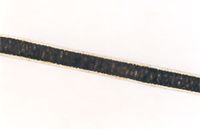 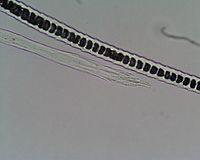
|
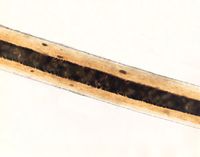
|
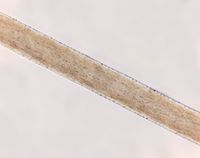
|
Along with identifying the difference between human, cat, and dog hair, competitors may also be asked general questions about hair. These may include but are not limited to phases of hair growth, information about the layers of the hair shaft, identifying the type of medulla or scale pattern of a hair strand under a microscope, and more. One common question that may be asked is the three layers of the hair shaft, which are cuticle, cortex, and medulla. (outside to inside)
Fibers
Natural fibers come from plants (cotton) or animals (wool). Manufactured fibers are synthetics like rayon, acetate, and polyester, which are made from long chains of molecules called polymers. To determine the shape and color of fibers from any of these fabrics, a microscopic examination is made.
Generally, the analysts get only a limited number of fibers to work with--sometimes only one. Whatever has been gathered from the crime scene is then compared against fibers from a suspect source, such as a car or home, and the fibers are laid side by side for visual inspection through a microscope.
The first step in fiber analysis is to compare color and diameter. If there is an agreement, then the analysis can go into another phase. Dyes can also be further analyzed with chromatography, which uses solvents to separate the dye's chemical constituents. Under a microscope, the analysts look for lengthwise striations or pits on a fiber's surface or unusual shapes.
When using a microscope to distinguish between animal, vegetable, and synthetic fibers, it can be difficult because there can be a seeming variety within a single fiber type, making it hard to tell what type it is. Generally variety within fiber types such as animal fibers is often because the magnification of the microscopes used to take the images of the fibers you find from searching on the internet is different. As an example, you may not be able to see the scales on a wool fiber under a microscope if the magnification isn't high enough. However, natural fibers usually have imperfections in width under a microscope. On the contrary, synthetic fibers usually are the same in width since they are man-made. After this, distinguishing between vegetable and animal fibers is usually just a matter of pattern difference.
In short, the fiber analysts compare the shape, dye content, size, chemical composition, and microscopic appearances, yet all of this is still about "class evidence". Even if fibers from two separate places can be matched via comparison, that does not mean they derive from the same source, and there is no fiber database that provides a probability of origin.
Plant fibers are made from cellulose and/or other carbohydrates, animal fibers are made from keratin and/or other proteins, and synthetic fibers are made from hydrocarbons, such as petroleum, a mixture of hydrocarbons.
Here is a useful table that can help to identify common fibers used in competitions based on a burn test.
|
Plastics
The polymers required for this event are PETE (1), HDPE (2), PVC (3), LDPE (4), PP (5), PS (6), and PMMA (7). HDPE, LDPE, and PP float in water while PETE-, PVC, PS, and PMMA do not. This means that the first group has a density of less than one and the second group more than one.
Identifying the polymers in the first group is easy. HDPE and LDPE are translucent while PP is not. HDPE is relatively more translucent then LDPE. Identifying in the second group is also fairly simple. PS will SLOWLY drop down in water or half of the flecks will sink while the other will float. PVC is sometimes rubbery, but never transparent, while PETE and PMMA are always clear. It is also good to have a chart on your cheat sheet with info about each of the plastics, which makes it easier to identify
Chromatography
Performing paper chromatography is relatively simple and requires a short list of materials. To practice performing paper chromatography at home or school, students should have:
- Strips of filter paper (some stores like Flinn Scientific sell paper specifically for chromatography, but coffee filters or paper towels work just as well)
- A beaker (200 mL should be fine)
- A glass stir rod or dowel to suspend the filter paper above the water
- A binder clip
- A pencil
- Pens or markers to perform chromatography on (water-soluble markers or pens like Expo markers get the best results)
- Around 50 mL of solvent (typically water, but can be done with other solvents such as alcohol)
To prepare the filter paper for chromatography, draw a line in pencil around 1 cm from the bottom of the paper strip. Drawing the line in pencil is important, as pencil will not be moved by the solvent. If the line is drawn in pen, it will be difficult to read the results. Place a dot of ink on the pencil line. Next, fill the beaker with the desired solvent so that the solvent stops just before the pencil line on the paper. It is important to not submerge the dot in the solvent, as the chromatography will not work if this happens. Attach the top of the strip of filter paper to a dowel or rod using a binder clip and place the bottom of the filter paper into the beaker. The dowel or rod will suspend the paper in the solvent so it travels up the filter paper and separates the pigments in the ink. Once the pigments have stopped moving, remove the paper from the beaker and mark where the solvent stopped.
Chromatography consists of two phases: the stationary phase and the mobile phase. The mobile phase is the substance that travels up the stationary phase. In paper chromatography, the stationary phase is the paper (and the water it contains) while the mobile phase is the chosen solvent.
[math]\displaystyle{ R_f }[/math] stands for retention factor or retardation factor (sometimes also called rate of flow). It can be calculated by measuring how far the solute (pigment) traveled and dividing that distance by how far the solvent traveled. A [math]\displaystyle{ R_f }[/math] should always be between 0 and 1. The higher the [math]\displaystyle{ R_f }[/math], the higher the solute's affinity for the mobile phase. If the [math]\displaystyle{ R_f }[/math] is high and the mobile phase is a non-polar solvent, then this indicates that the pigment is also likely non-polar. Conversely, if the [math]\displaystyle{ R_f }[/math] is low, the solute has a high affinity for the stationary phase. If the solvent is non-polar, then this indicates that the solute is likely polar.
Fingerprints
Practice identifying and comparing fingerprints. There are 3 basic categories of fingerprints(arches, loops, and whorls). They are easily identified by there general shape and number of deltas (triangles made from ridges). Make sure you know if your event supervisor is looking for the basic type (loop, arch, whorl), or the more in-depth name (Tented Arch, Ulnar Loop, etc.).
- Arches= a hill shape with no deltas
- Tented arch= an arch with a sharp corner at the top point
- Plain arch= an arch with a more rounded top point
- Loops= a beanish shape with one delta
- Ulnar Loop= A loop pointing towards the pinky
- Radial Loop= A loop pointing towards the thumb
- Whorls= a circle-like shape with two or more deltas
- There are many sub-categories of whorls, such as (but not limited to)-
- Plain whorls
- Central Pocket
- Double loops
- Accidental whorls
- There are many sub-categories of whorls, such as (but not limited to)-
DNA
- See also: Heredity#DNA.
DNA (deoxyribonucleic acid) is an organic molecule that codes for all the traits in an organism. Almost every cell in the human body contains DNA. The base unit of DNA is a nucleotide, which is made up of a deoxyribose sugar, a phosphate group, and a nitrogenous base. These bases give nucleotides their names: adenine, guanine, cytosine, and thymine. DNA is made of two long strands of these nucleotides that link with each other, twisting to form a double helix shape. Adenine links with thymine, and guanine links with cytosine. These nitrogenous bases connect through hydrogen bonds.
Each long strand of DNA is called a chromosome. Humans have 23 pairs of chromosomes, meaning they have 46 in all. Each chromosome stores hundreds of genes, which is the amount of DNA that is used to make one protein. Proteins are macromolecules like DNA which make up all the tissues in the body.
To produce the DNA fingerprints used on Crime Busters tests, two processes typically take place. The first is polymerase chain reaction, or PCR. PCR multiplies small fragments of DNA like those found at a crime scene so that they can be used for DNA analysis. To produce the fingerprints used on tests, gel electrophoresis is performed on the fragments produced through PCR. This sorts them by size and creates images similar to the one shown on the right.
PCR has three steps: denaturing, annealing, and synthesis. In denaturing, the DNA sample is heated so that the two strands separate. In annealing, DNA is cooled so that a primer attaches to the separated strands. This primer allows for new DNA to be synthesized in the third step. In synthesis, a special enzyme called Taq polymerase creates new DNA using the primer as a starting point. Taq polymerase does not occur in the human body, and instead comes from a special heat-resistant bacteria. This is because standard DNA polymerase cannot withstand the temperatures used in PCR. Once these three steps are completed, more copies of the original DNA have been created.
Once PCR has been performed on DNA, it is put into a special machine so that gel electrophoresis can be performed. A gel electrophoresis apparatus is a box containing a buffer solution as well as a special agarose gel with wells at one end. The box also has electrodes at each end--the negative electrode is placed near the wells, while the positive electrode is placed on the far side of the wells. The DNA is placed into these wells, and current flows to the electrodes. Since DNA is negatively charged, when the current is switched on the fragments will move towards the positive electrode. Longer DNA fragments will get caught in the agarose gel, allowing shorter DNA fragments to travel further. This process is known as sieving, and separates the DNA fragments to form the familiar DNA fingerprint.
Soil
Soil is usually included on a test as an identification lab test for one or more soil samples, but general questions may also be asked about soil. The six main types of soil are peaty, loamy, sandy, clay, chalky, and silty. A method to identify soil types is identifying them by the color of the soil. A dark brown color signifies a loamy soil, a darker brown color (almost black) signifies a peaty soil, sandy soil has a color of that of sand but darkened quite a bit. Clay soil has a slightly lighter color than sandy soil, chalky soil has a color similar to that of limestone, and silty soil has a similar color to loamy soil, but a slightly lighter color.
The pH of a soil sample may also be asked on a test using a powder and a labeled container you can put the soil sample in that tells you the pH of the soil based on color code. The following values of pH of each soil type may not be fully accurate, so it is recommended that you don't use them on your note sheets and check first to see if you get a different result when pH testing. Sandy soil has a pH of about 4.5-5.5, silty soil also has a pH of about 4.5-5.5, clay soil ph of about 5.5-7.0, loamy soil has a pH of about 5.5-6.5, peaty soil has a pH of about 3.0-4.0, chalky soil has a pH of about 7.1 or above. The ideal pH of plant growth is about 6 to about 8.
Some of the following may be asked on a test.
- The diameter of silty, sandy, and clay soil from least to greatest is in the following order: clay, silty, and sandy.
- Loamy soil is a mixture of sandy, silty, and clay soil and contains lots of organic matter, making it nutrient-rich and good for plant growth.
- Peaty soil is acidic and very high in nutrients, but this can lead to the soil having fewer nutrients ultimately.
Shoeprints and Tire Tracks
These two topics are mostly matching using images of shoeprints and tire tracks, similar to some of the other topics in this event, however, the type of print may be asked. There are three types of prints: patent (also called visible), plastic, and latent. A patent print is one that is already visible to the human eye, such as a print from water or blood on the ground. Like a patent print, plastic prints are also visible when made, except that an imprint is made in the ground itself, a force is exerted on the ground by the shoe that causes the ground beneath the shoe to decrease a little in elevation, usually on a surface as mud or clay with high moisture, whereas patent prints just contact between the ground and the shoe, forming a print mark resembling the shoe from a substance that is visible. Latent prints are not visible and therefore need different kinds of methods depending on the print to uncover them so that they are visible. These methods are more explained in-depth at the Forensics page, where you can find a few examples.
Bloodstain Analysis
Participants may be asked to identify the velocity of one or more blood spatters. They may also be asked to find the direction of the impact of a blood drop, which is found by using the direction of the tail. If the blood drops of a spatter have a smaller average diameter, then the velocity of the spatter is higher. A good practice for this is to ask students for the velocity of various images of blood spatters. Some examples are shown below.
Usually, a murder would not result in the formation of a low-velocity spatter. Instead, medium-velocity spatters and high-velocity spatters would likely form as a result instead.
Water Testing
Water Testing (no longer in the rules after 2010)
The rules describing water testing are very vague. They only specify what can be tested for, but not how they can be tested. Titrations, probes, and colored strips are some possible methods used. Below is a table of the very basics on each of the aspects included in water testing.
Examples of Water Testing on Past Tests
|
Analysis
Keep in mind that this portion of the event is worth 25% of the score. So, it is very important to leave enough time to get it done right!
An event supervisor will likely give few instructions besides something along the lines of: "Based on your analysis of the evidence, who is likely the culprit?" However, there are many things that they may be looking for beyond just a name-
- Rationale based on physical evidence- Use the evidence to support your claim. Talk about every piece of physical evidence that points to that person. To connect someone to the crime scene, one could cite a connection like "Joe works with flour daily, and flour was found at the crime scene" or even more simply "Joe's fingerprints were found at the crime scene".
- Reasons why it wasn't the other suspects- Even if the test does not explicitly ask for this, it is an excellent idea to include it in the essay. Write at least a sentence for each person (more than a sentence if there is a lot evidence pointing towards them and you have to explain more in-depth why it wasn't them). If there is a lot of evidence against a second person, but you're sure it wasn't them, then talk about a logical reason why there would be all of that evidence (for instance, "they work at the crime scene" is a common reason). Also, even if someone has no evidence against them, include that in the essay: "Joe had no evidence connecting him to the crime scene, so he was not the culprit".
- Motives- Give a motive for the person suspected to be the culprit, or if the proctor gave possible motives in the bios, restate them. This can add a lot to the essay, and help support your claim even if the wrong person has been selected.
- Multiple or No Culprits from List of Suspects- While most tests will have one culprit from the list of suspects, do not get trapped into thinking that it must be only one person. Some proctors may set up the test to point to two people working together, or they may leave insufficient evidence to point to anyone. If either is the case, adjust the essay structure to fit the claim, and make a logical explanation. If correct, you will likely do very well. If incorrect, a logical explanation should receive a decent amount of credit for the essay anyway to still allow for a high placing.
- Essay Structure-This can never hurt to have and takes very little time to do. Having a planned structure can also save time when planning the essay during the event. A simple, yet effective structure goes as follows.
- Intro Sentence- i.e. "Based on the evidence gathered, we concluded that the culprit was Joe".
- Lead-in to evidence- i.e. "There is much evidence to support our conclusion"
- State evidence in multiple sentences- i.e. "Flour was found at the crime scene, and Joe works with flour daily. Also, Joe's fingerprints and DNA were found at the crime scene. Finally, Joe.... etc."
- Lead-in to other suspects- i.e. "In addition, Bob was the next likely suspect" *remember to put the suspects from most likely to least likely, as it is the easiest for the proctors to read
- Sentence on each suspect- See "Reasons why it wasn't the other suspects" section above
- Conclusion Sentence- i.e. "Therefore, it can be concluded that Joe was the culprit."
Multiple Short Essays
With the time crunch often imposed on the scorers, a sequence of shorter essays (50 words or less) may sometimes be asked as the analysis. These typically address specific areas of the analysis: something about the crime, how it was committed, who committed it, the sequence of events, or something else of that sort. However, this is quite rare, and you will often see the traditional format of analysis instead.
Competition Strategies
Once materials are given to teams and the supervisor starts the competition, start by doing the paper chromatography test. Then, look at the rest of the test and estimate how long it will take or how much there is to do. If it is a lot, make sure to split up the work in order to avoid having wasted potential and then not finish. While the chromatography is going, identify all the unknowns using the tests described above. Please note that at higher levels of the tournament (state, national) and even sometimes Regionals, different compounds may be combined with each other- for example, flour and Alka-Seltzer. While one person is testing unknowns, the other might want to do the fiber, hair, or polymer testing. If there is a microscope set up for the hairs, make sure to go there first, because it will get crowded near the end, when teams may have to waste time waiting. After all the unknowns are identified, read through the packet to learn about the crime scene, and answer the questions. Then, after questions have been answered, write out the crime solution essay, discussing how the team chose the culprit(s), based on their motive and supporting evidence (the unknowns the person was carrying compared to the substances found at the crime scene). Following the supervisor's instructions, hand in the test and answers, clean up your lab area and relax until the supervisor dismisses the teams.
Make sure to leave enough time for the essay. Depending on the crime, it may be simple or extremely complex
WARNING: The rules say teams will get 50 minutes. However, the 50 includes the supervisor talking about safety/tips/rules/etc, so often teams will only have 40-45 minutes to actually work. It is probably a good idea to practice with only 40-45 minutes to get used to competition conditions. At 2010 Nationals, a brief introduction was given, then 45 minutes to work, along with a 5 or 10 minute clean-up time after teams handed in their tests.
HINT: In some competitions, teams may not get full points for ONLY identifying the substance. In many instances, teams will be given a blank chart that must be filled in with observations. These observations may include (but are not limited to): HCl test reactions, Iodine test reactions, pH, Solubility in water, Shape, Size, or Color. Even though with one simple HCl and water test, one could figure out Alka-Seltzer, taking time to test it or write down all observations could help. Even if you skip a small portion, such as hairs, placing is still possible if all observations were written down, and not just the identity of the substance, seeing as the identification and process of identifying the substance is worth 50% of the points. Some supervisors will even put a scoring chart on the front/back of the handout/packet to show the breakdown of points. Even if you fail to correctly identify a substance, the supervisor could award partial credit for filling in observations.
Scoring
Each section of the event should make up a specified portion of the test. These percentages are approximate, and some test authors may not follow them. As these are guidelines, actual point values should be given for each individual question.
- Qualitative Analysis (powders, metals, and liquids): 50%
- Polymers and Natural/Man-Made Substances (hairs, fibers, and plastics): 10%
- Paper Chromatography: 5%
- Crime Scene Physical Evidence (fingerprints, DNA evidence, shoeprints and tire treads, soil, and spatters): 10%
- Analysis: 25%
Ties will be broken using the analysis score first, followed by the qualitative analysis score and the polymers score. Penalties may be given if students do not properly clean their area after the event or if prohibited items are brought to the competition (see Crime Busters#At The Competition).


